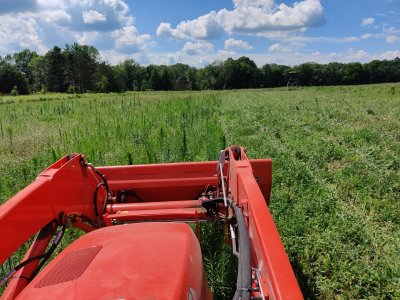SD51555
5 year old buck +
That cage thread was a really good idea. Why not expand the conversation to the whole mission? I got to wondering about how to keep moving the mission ahead as things get tight, and tight could mean either time, money, or ability. When times were good, I was still hard at work trying to reduce TMA (time/money/ability) while also increasing output. It wasn't that I wanted to do less, or spend less, I wanted to accomplish more and as fast as possible.
So, if anyone has just started adjusting their thinking this year, what have you done lately to change the way you do things?
I have some hard rules, and I break them periodically:
*I don't plant trees. If I do plant trees, I don't buy them, I relocate them from inside or near my property. If I do buy them, I dodge my brother until he forgets I owe him for the pines.
*It takes money to fertilize. It takes far less money to mineralize.
*I spend as little as possible on maintenance, and as much as possible on durable improvements. If something ends up being high maintenance, I get rid of it.
*The single most labor intensive activity I do each year is chainsaw work. I may put 6-10 hours into my food plot program each year (not counting new plot construction and startup activity). Trail maintenance might be second at 12 hours. I put 40-60 into my chainsaw work. Outside of the cost of the saw or chain sharpening, it just costs me some sweat and a gallon or two of saw fuel, and does the absolute most to improve things quickly and on a big scale.
So, if anyone has just started adjusting their thinking this year, what have you done lately to change the way you do things?
I have some hard rules, and I break them periodically:
*I don't plant trees. If I do plant trees, I don't buy them, I relocate them from inside or near my property. If I do buy them, I dodge my brother until he forgets I owe him for the pines.
*It takes money to fertilize. It takes far less money to mineralize.
*I spend as little as possible on maintenance, and as much as possible on durable improvements. If something ends up being high maintenance, I get rid of it.
*The single most labor intensive activity I do each year is chainsaw work. I may put 6-10 hours into my food plot program each year (not counting new plot construction and startup activity). Trail maintenance might be second at 12 hours. I put 40-60 into my chainsaw work. Outside of the cost of the saw or chain sharpening, it just costs me some sweat and a gallon or two of saw fuel, and does the absolute most to improve things quickly and on a big scale.
Last edited:


